There’s nothing quite like the beauty and diversity of letter forms carved in stone. The level of craft that went into making the forms is evident, even if the product has been eroded by years of exposure. My passion for the many eclectic shapes and styles that glyphs can take was first ignited by my participation in ‘Urban Lettering Walks’ with design historian and writer Paul Shaw. The vernacular typography that I observed during these walks became the inspiration for two digital typeface designs, Bowery and Bequeath. Both were designed with the intention to create distinctive digital typefaces for use in contemporary design contexts, with reverence to their historical roots.
Bowery was based on letter forms carved into a stone plaque from the late 19th century, located in the Bowery Mission meeting room on the Lower East Side of Manhattan. Bequeath was based on 18th century gravestone inscriptions found in the cemeteries of New York City.
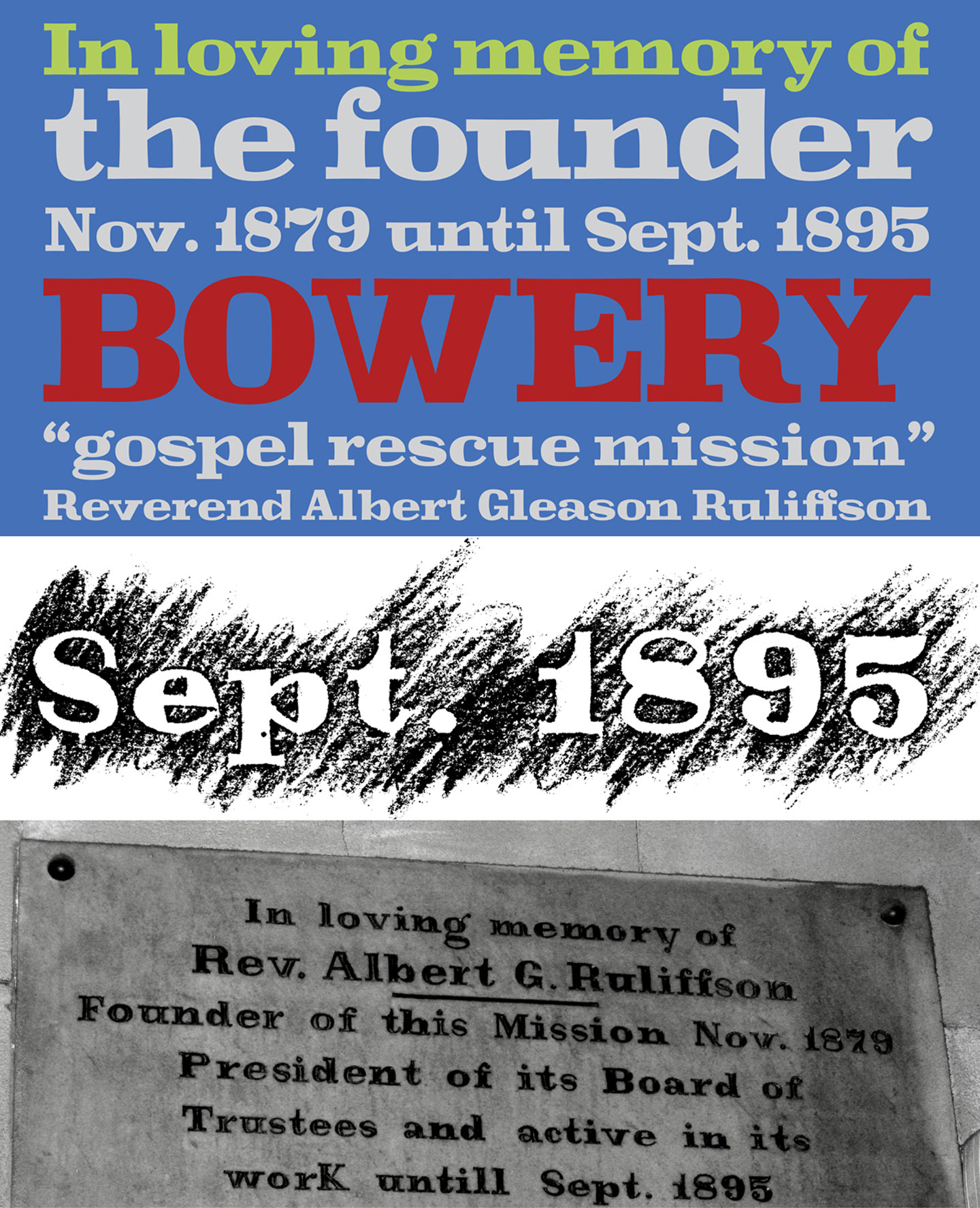
Bowery typeface design
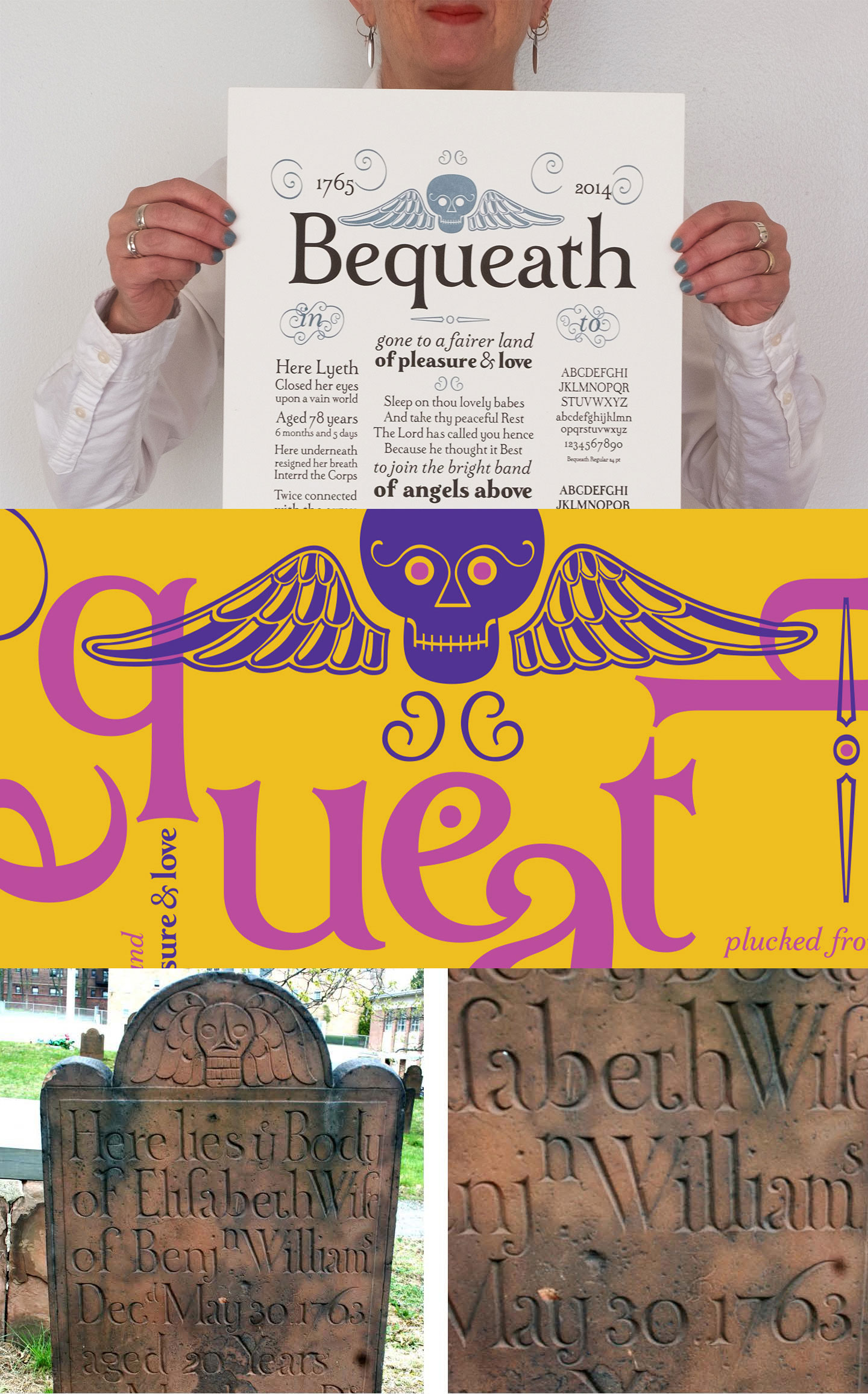
Bequeath typeface design
Transition to a New Media
A few years ago, at a Type Thursday event, Wes Adams discussed his process of carving letters in stone. He brought with him a breathtaking physical example of his work. Wes made the craft of carving in stone seem accessible. Inspired, I searched for local classes on stone carving. By pure accident, I landed on the site for Sculpture Space in Long Island City, NY. I got no further. Sculpture Space did not have classes in stone carving, but they did have classes in ceramics. Like in the old days of discovering a book in the library, next to the book you were looking for, suddenly wheel thrown ceramics looked perfect. The classes were offered at the perfect time, the right cost, and the space looked gorgeous. This could be an opportunity to get off the computer and get my hands dirty.
Working in Clay
Working with clay is an education in craft, art and procedure. The process of making ceramics occurs over time and in stages. It demands patience, vigilance, attention, commitment and practice. The clay is transformed from a wedged lump to a form, from greenware to bisque to glazed. Things can go sideways in pretty much every stage of the process. It requires understanding the limits of the medium, learning to master technique, pre-visualizing and creating form, and then making countless decisions about shape, style, refinement, surface treatments, color and usage.
The process began with learning how to make vessels and shapes.
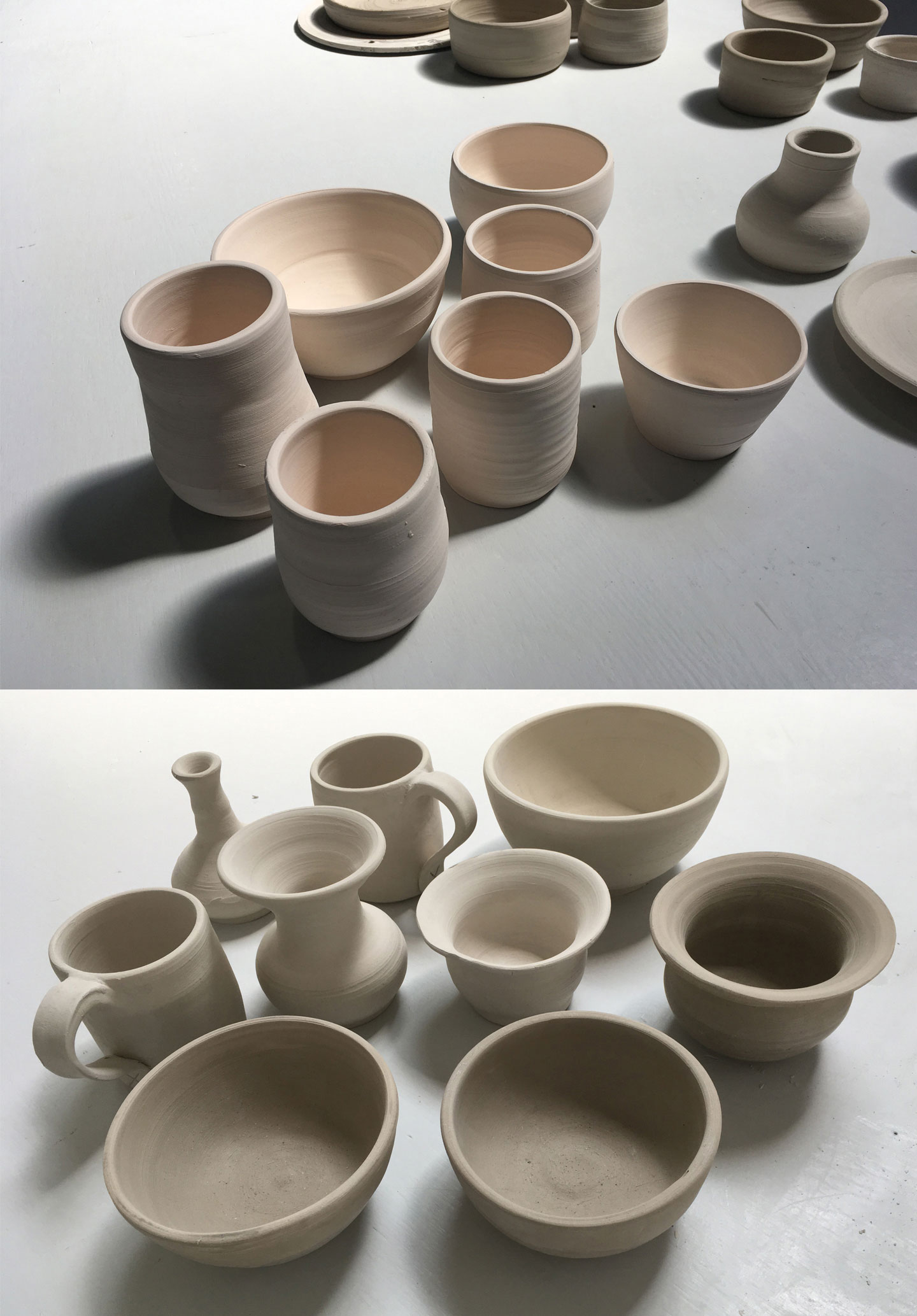
Wheel thrown forms
After months of practicing how to make a variety of forms, with more than enough plates, bowls and mugs, to use and give away, I wondered where to go next? Diving deeper into glazing and surface techniques did not really appeal to me. Although my throwing skills still needed a lot of refinement, it seemed that if this medium was going to hold my interest there needed to be some integration with design, or better still, typography. Learning about under glazes, the vibrant colors that can be applied to ceramics at various stages in the drying and firing processes, provided the inspiration for the next phase. I was reminded of stencils I had created with the Bowery typeface to make door numbers for my building, which gave me an idea.
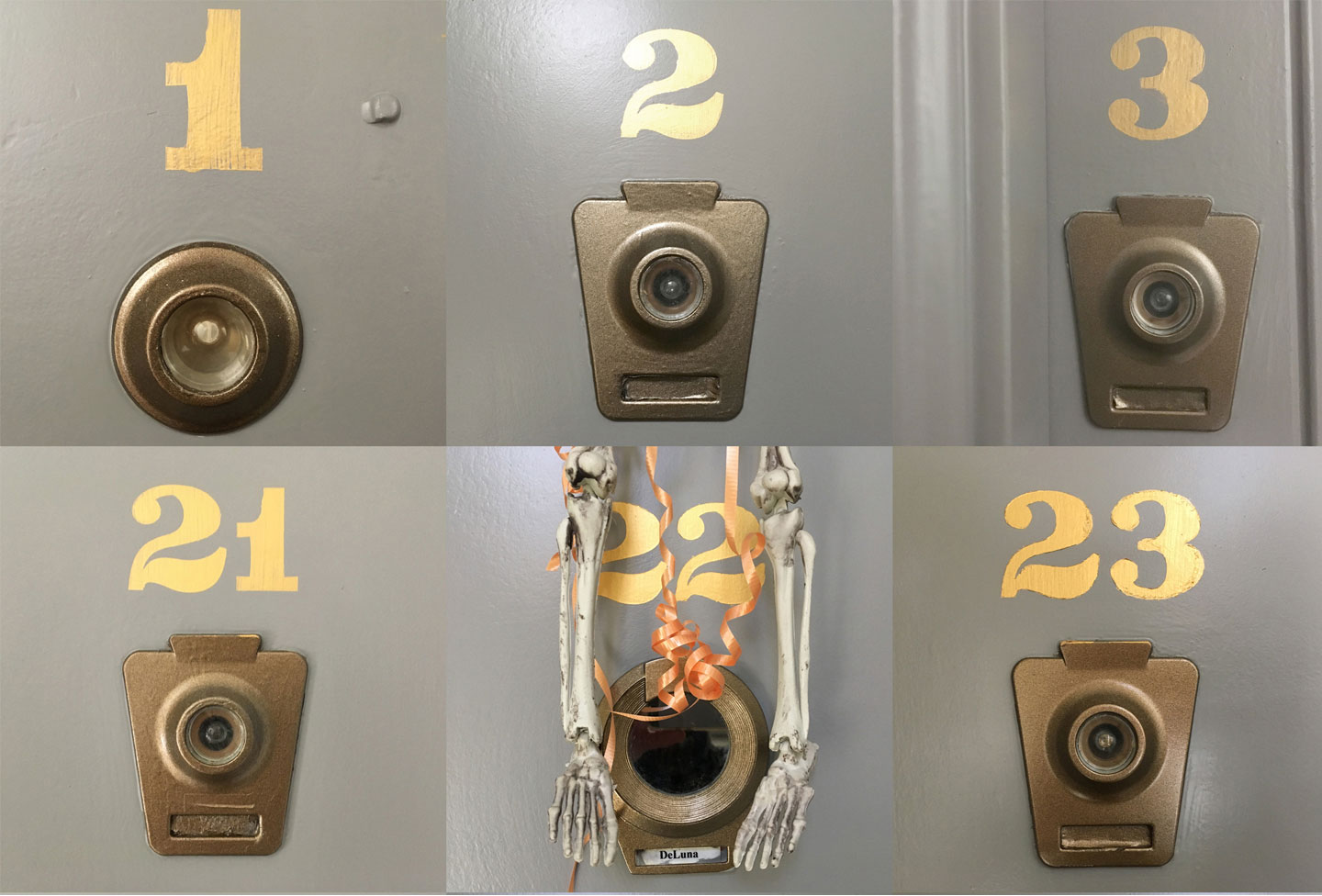
Bowery door numbers
Painting with Glazes
Starting with a few glyphs and then moving on to alphabets, words and patterns I created more stencils using the Bowery typeface. I began experimenting by using them to paint underglaze on a variety of forms.
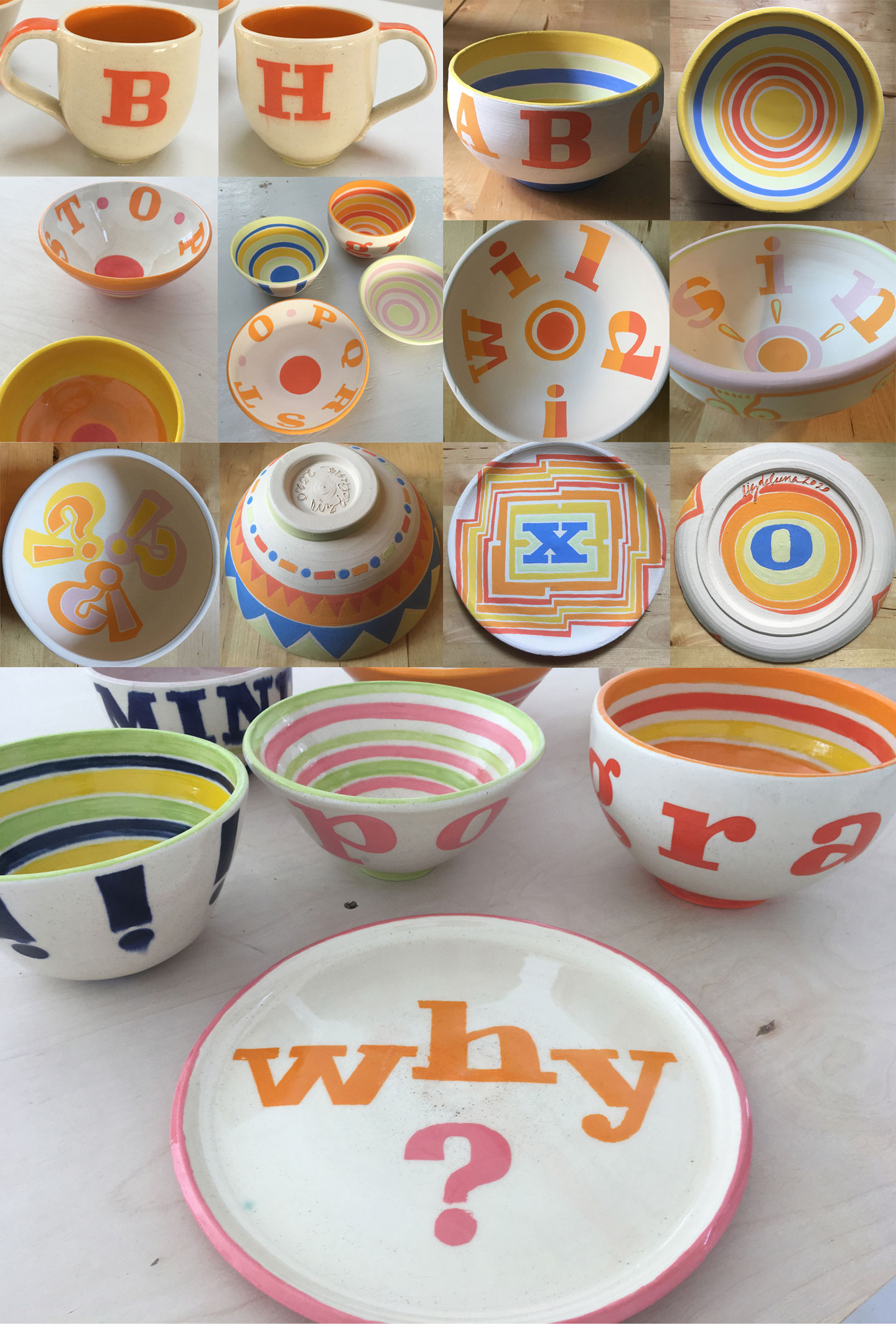
Mugs, bowls and plates. In process and after final glazing
The year-long project became an exploration of making and craft, technique and processes. My focus turned to experimenting with how to best create the stencils, what underglazes to use, when and how to apply them, and what forms to make. A stencil cutting machine, a small banding wheel, paint brushes and jars and jars of colorful underglazes all became the essential studio tools of 2020. I embraced the path of exploration, experimentation and iteration. Like any iterative process, there have been a few casualties along the way.
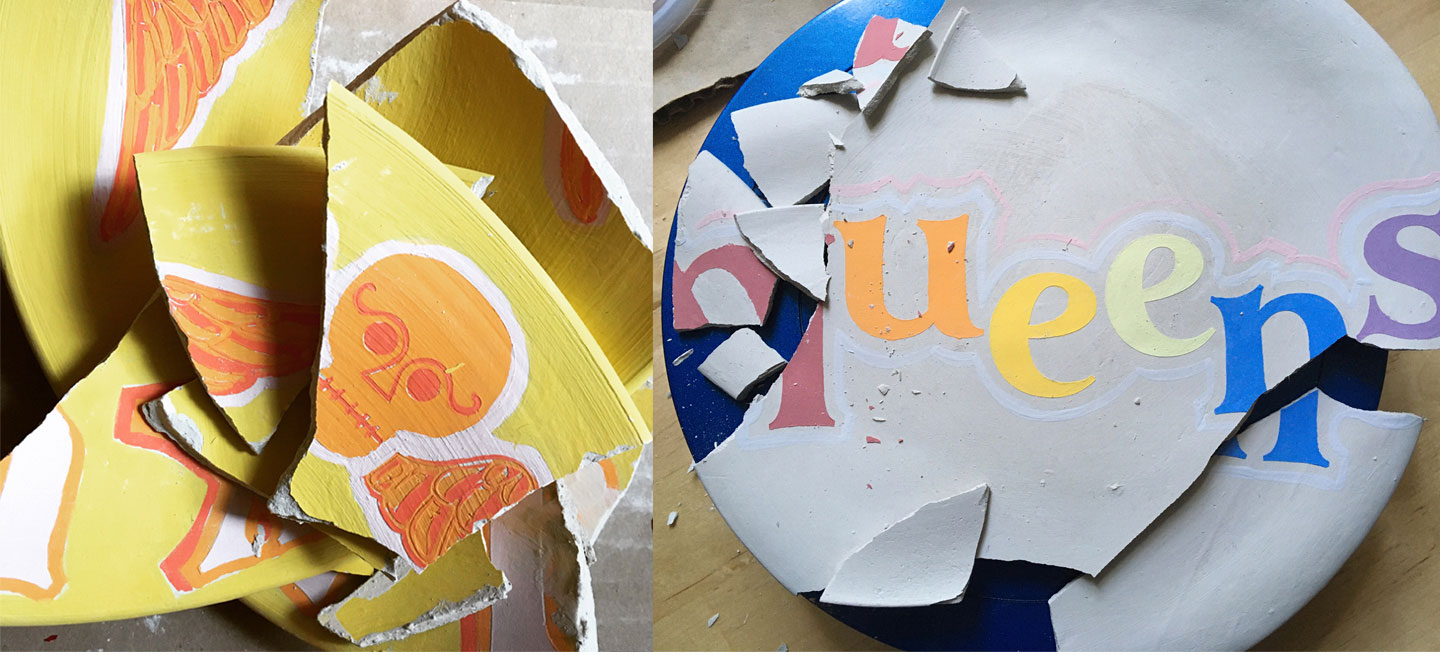
Painted and broken
While continuing to work at Sculpture Space to produce and fire the forms, most of the underglaze painting happens in my home studio. When Sculpture Space shut down in spring 2020, the clay came home as well, which prompted some experiments with hand building techniques. This project and process has been my COVID sanity.
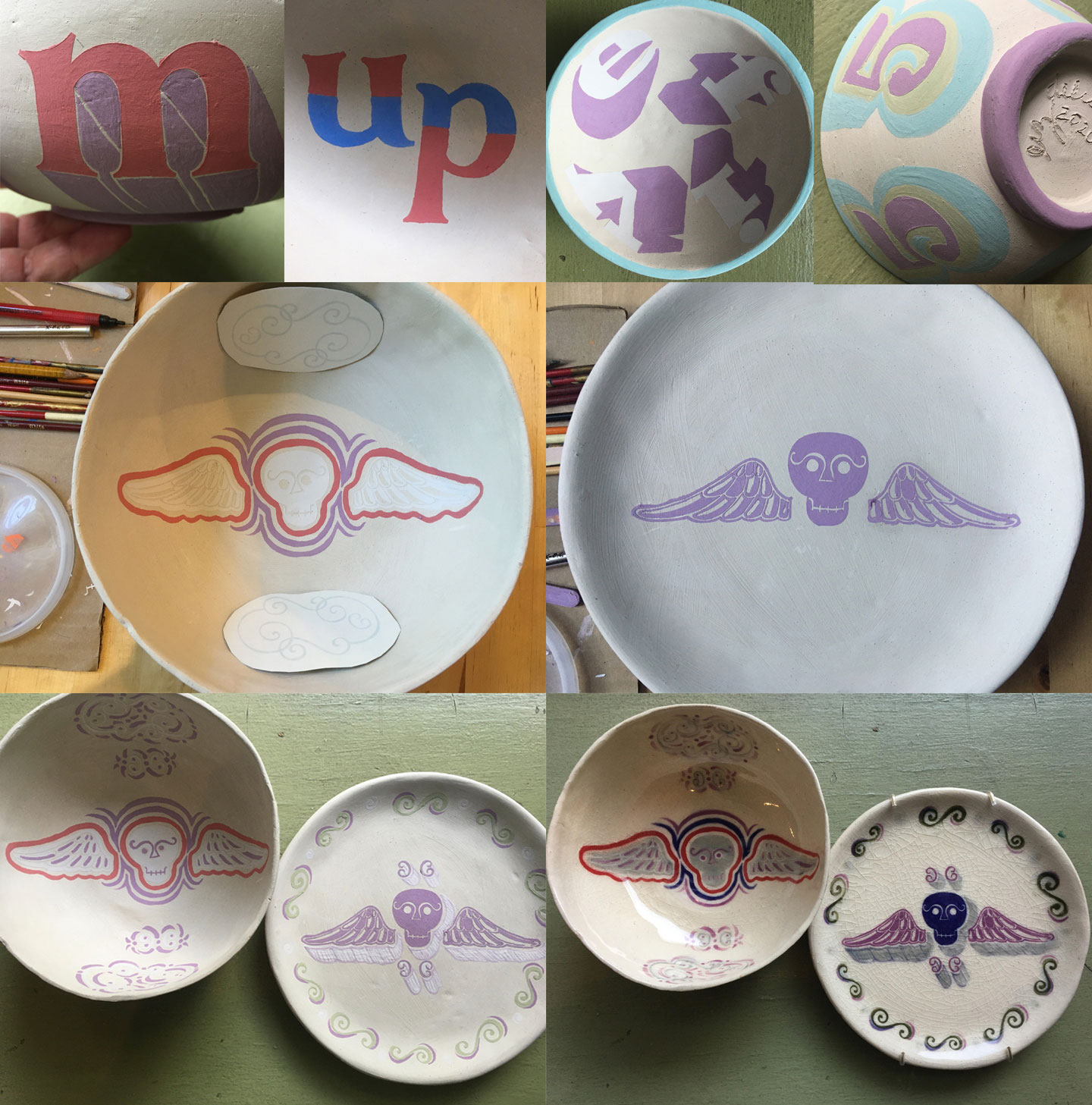
Hand built plates and bowls
Looking Ahead to 2021
This work gives me the opportunity to experiment, to channel my years of experience with design and typography through my hands and into clay and paint. It allows me to learn technique, explore form making and delve into the world of decorative arts. It forces me to be methodical and focused, in a challenging time. It also gives me the opportunity to give form to my typeface designs and return them to a home in stone(ware). Where it all goes from here I do not know, but I do know that I will keep applying the same processes I’ve used throughout my career as a visual designer, to the wonderfully malleable medium of clay.
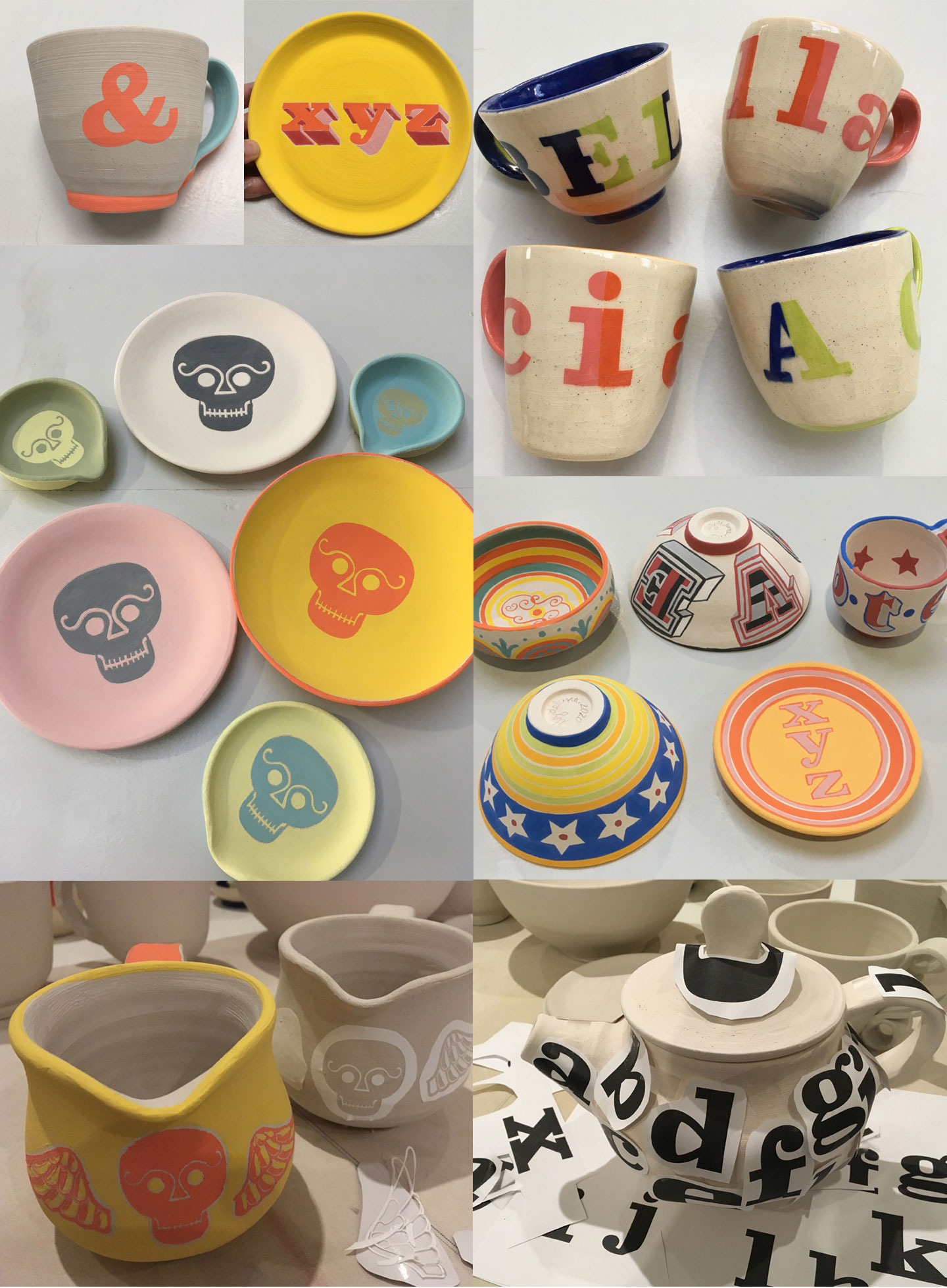
More mugs, bowls, plates, pitchers and a teapot: In process and after final glazing

Happy Holidaze! from Bowery & Bequeath
Bette(r) Days celebrates the things that did not suck in 2020. Each day in December, we’ll be posting about the highlights of our collective garbage fire of a year, type-related or not.